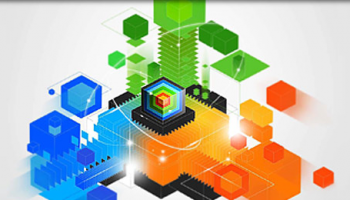

The core server powering the zEnterprise System – called zEnterprise 196 (z196) – contains 96 of the world’s fastest, most powerful microprocessors running at 5.2Ghz, capable of executing more than 50 billion instructions per second.
In addition, the new zEnterprise mainframe features new software – the IBM zEnterprise BladeCenter Extension and the IBM zEnterprise Unified Resource Manager. The IBM zEnterprise BladeCenter Extension allows applications running on general purpose IBM Power7 and System x BladeCenter systems as well as systems optimised for specific workloads, such as analytics and managing web infrastructure, to be integrated with, and managed by, the zEnterprise mainframe server, IBM said in a press release.
Moreover, blade servers connected to the IBM zEnterprise BladeCenter Extension — which are managed as if they were a mainframe – accelerate System z workloads at a lower cost per transaction and are completely transparent to the application. General purpose blades include Power 7-based blades running AIX, IBM’s Unix operating system and IBM System x-based blades running Linux.
The IBM zEnterprise Unified Resource Manager integrates multiple platform resources as a single virtualised system and provides unified management for zEnterprise. It also helps to extend mainframe quality of service attributes, including security and reliability, to workloads running on Power and System x BladeCenter systems. For example, the Unified Resource Manager can identify system bottlenecks or failures among disparate systems. If a failure occurs on an x86 blade, the Unified Resource Manager can instantaneously move the affected application to another server to keep it running. It can also help prioritise compute workloads to better achieve business goals, IBM explained in its zEnterprise press release.
Meanwhile, IBM is also announcing the new IBM Smart Analytics Optimizer, an accelerator for analytic workloads integrated to the new mainframe through the BladeCenter Extension, Rosamilia said. With the hybrid features of the new zEnterprise system and the Smart Analytics Optimizer customers can analyse data to anticipate emerging business trends, capture new opportunities and avoid risks ten times faster, he said.
IBM also announced new Tivoli systems management software, WebSphere middleware, Rational development tools and Lotus collaboration software for the zEnterprise. Each offering has been optimised for the zEnterprise.
And IBM also is announcing a new z/OS Distributed Data Backup feature for its flagship DS8000 storage system that can help lower data protection and disaster recovery costs by consolidating cross platform disaster recovery environments on to the z196.
“The new IBM zEnterprise System represents a revolutionary change to the platform and the next phase in the evolution of highly efficient, scalable processing opening up the possibility of hosting entire workloads on a single highly integrated system,” said Martin Kennedy, managing director of Citibank’s Enterprise System Infrastructure, in a statement. “The new zEnterprise also paves the way to enhance the energy dynamics of our data centers. As one of America’s ‘Greenest’ banks we plan to take full advantage of the additional capacity and advanced power and cooling capabilities unique to zEnterprise. Citi’s unified technology decision making model and its recent efforts to gain efficiencies prepared us to invest in these innovative technologies that benefit our clients.”
If the zEnterprise lives up to IBM’s claims of efficiency and optimised performance, then it’s going to be an option worth considering for enterprise customers, who may be downsizing off their mainframes as a simple knee-jerk reationc.
In a paper discussing the economics of the mainframe, Howard Rubin, CEO and founder of Rubin Worldwide, said:
“Most businesses today rely on an un-engineered mix of computational platforms – mainframe computers; UNIX, Wintel, and Linux Servers; Midrange devices (e.g. AS400). The choice of how much to put on the mainframe or servers just sort of happens, it is not by design. At the same time many organizations have adopted standards and architectures that move them away from mainframe computing in the near and far future under the banner of modernization. However, while mainframe computing (or server based computing) may not be right for all forms of computation – notice I haven’t even gotten to supercomputing and megaflop environments – it is essential for organizations to simultaneously consider both the functional characteristics of their computing needs and economic considerations.”
Page: 1 2
After being 'retired' by Intel's board of directors, ex-CEO Pat Gelsinger has joined a VC…
President touts easing Chinese tariffs to facilitate TikTok sale, and also implements 25 percent tariff…
Copyright lawsuit against OpenAI and Microsoft from The New York Times and other newspapers can…
New chapter for famous name from Internet's early days, Napster, has been acquired and will…
Solving not-spots? Ofcom proposal to make UK the first European country to allow ordinary smartphones…
Pioneering robotaxi service from Alphabet's Waymo to go live in Washington DC next year, as…